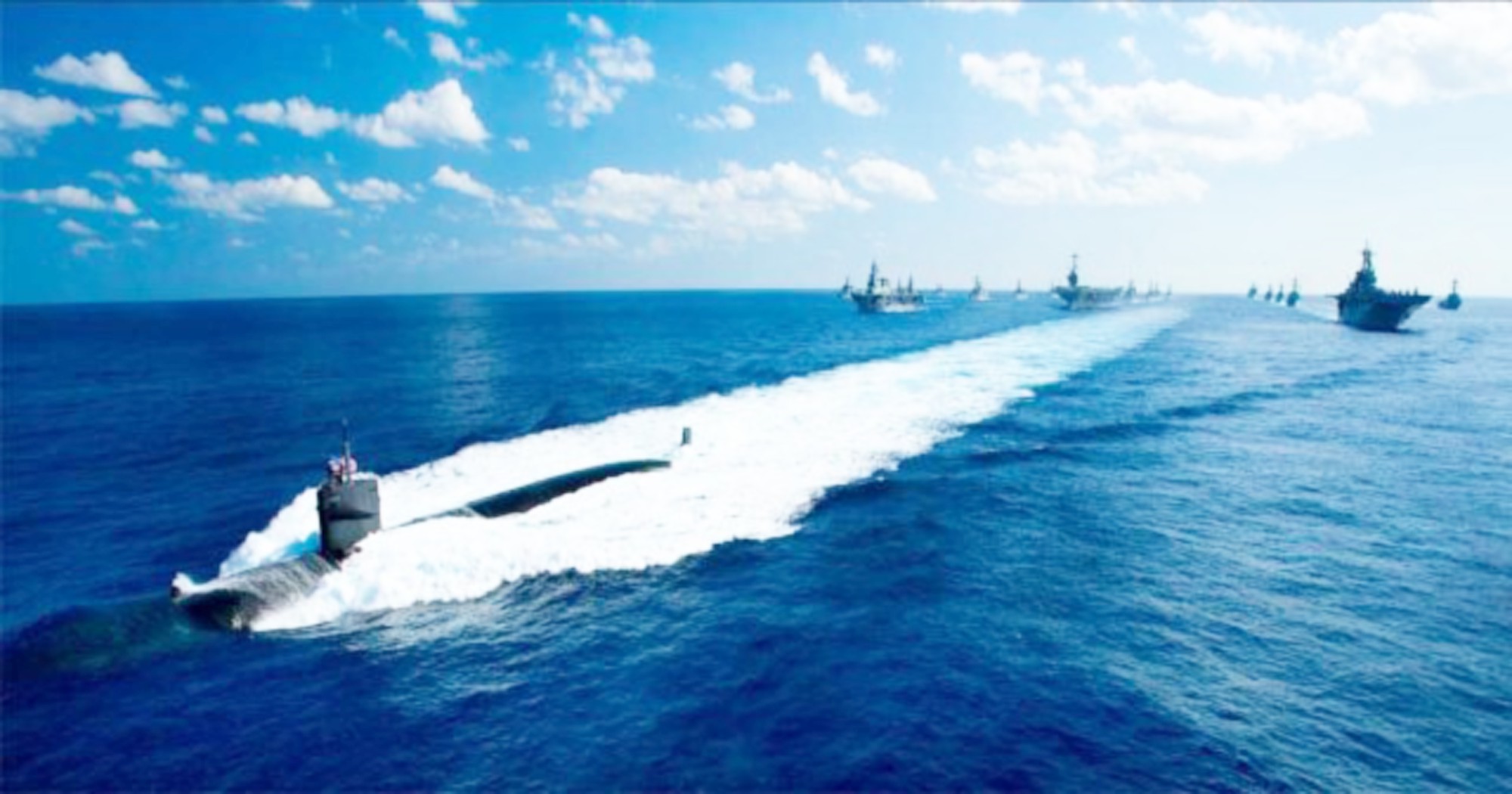Dr. Zafar Nawaz Jaspal
Pakistan’s nuclear weapons program is primarily predicated upon its ability to act as a deterrent, to prevent nuclear blackmail by, or a nuclear conflict with, India. Therefore its nuclear posture is governed by the quantitative and qualitative reforms in India’s conventional and nuclear forces.
On September 17, 2018, Pakistan Navy chief Admiral Zafar Mahmood Abbasi said: “India’s sea-based nuclear weapon initiative compelled Pakistan to take steps for maintaining strategic balance in the region.” Nuclear-armed diesel-propelled submarines aim to discourage Indian aggression through the concept of deterrence by punishment, which relies on the threat of unacceptable costs caused by retaliation in the case of any hostile action.
India and Pakistan have been developing their nuclear arsenals. Recently, both announced the completion of their “nuclear triads,” a three-pronged military force that consists of land-based launchers, submarines and aircraft capable of delivering nuclear bombs and missiles. This triad is imperative for credible nuclear deterrence. However, it has raised concerns about the international and regional ramifications of an unrestrained nuclear arms race between the belligerent neighbors.
This race between India and Pakistan is a result of the former’s ambitious realpolitik policies as New Delhi struggles to establish its hegemony in South Asia. India’s first successful nuclear test on May 18, 1974, and its subsequent dismissive response to Pakistan’s proposal at the United Nations Security Council for a South Asian Nuclear-Free Zone, invigorated Islamabad’s nuclear weapons program to prevent nuclear blackmail and aggression.
India’s nuclear-weapons tests on May 11 and 13, 1998, forced Pakistan to carry out its own nuclear detonations a few weeks later, on May 28 and 30, to restore the strategic equilibrium between the countries. Subsequently, Islamabad proposed nuclear restraint in South Asia to avoid a nuclear arms race. Rejecting the proposal, India steadily increased its arsenal of nuclear weapons and in August 2016 announced the deployment of its first nuclear-powered submarine, the Arihant. It plans to add four nuclear-propelled submarines to its blue-water fleet by 2025.
The deployment of the Arihant in the Indian Ocean was alarming for Pakistan because the vessel can remain underwater, virtually undetected, for months at a time. Moreover, India’s sea-based missiles the K-4, K-15, Dhanush (a modified version of Prithvi-III) and Brahmos (built with the cooperation of Russia) have augmented the strike capability of the Indian Navy. There might be a further large shift in the reach of the Indian Navy with the addition of the sea-based, sub-sonic, stealth Nirbhay cruise missile, which has a range of 1,000 kilometers, in the near future.
Pakistan’s navy cannot ignore India’s blue-water naval build-up, especially its nuclear weapons. Therefore it is investing in the development of its own sea-based nuclear weapons capable of providing a second-strike capability. Admiral Abbasi said: “We have legitimate concerns and our program is aimed at discouraging India from doing so.” He correctly warned that: “Sea-based nuclear weapons provide an assured second-strike capability that disturbs the equation, so unless we equate that, the imbalance might induce India to start a conventional war.”
Indeed, submarine-launched nuclear weapons are considered the second-strike capability most likely to survive a devastating first strike by an adversary. To balance the increasing nuclear capability of the Indian blue-water navy, Pakistan developed the Babur-III, a submarine-launched cruise missile that has a range of 450 kilometers and the ability to deliver a variety of payloads, including nuclear warheads.
It “incorporates state-of-the-art technologies, including underwater controlled propulsion and advanced guidance and navigation features, duly augmented by global navigation, terrain and scene matching systems.” Moreover, Babur-III features terrain-hugging and sea-skimming flight capabilities to evade radars, air defenses and ballistic missile defense systems.
A test of the Babur-III was performed on March 29, 2018, from a submerged platform off the coast of Pakistan in the Arabian Sea. With its development, Pakistan’s navy has acquired nuclear-armed submarine capability and is therefore able to conduct nuclear strikes with impunity from the sea.
The Pakistani navy does not have any nuclear-powered submarines, but nuclear-tipped Babur-III missiles would be placed on French-built Agosta 90B-class submarines that are powered by diesel-electric engines. Admiral Abbasi also confirmed that Pakistan has signed an agreement with China to buy eight 039A diesel-electric attack submarines that can also be equipped with nuclear weapons.
The development by India and Pakistan of sea-based nuclear weapons certainly strengthens their deterrence capabilities, as well their defenses. But it also affects the strategic environment of the Indian Ocean and is alarming for the littoral states there. These states cannot ignore the possible effects of a nuclear conflict between the belligerent neighbors, or of nuclear accidents at sea.
Dr. Zafar Nawaz Jaspal is an analyst and professor at the School of Politics and International Relations, Quaid-i-Azam University, in Islamabad. E-mail: jaspal_99@hotmail.com.


